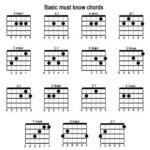The rhythm action genre once dominated living rooms worldwide, and at the forefront of this plastic instrument revolution were titans like Guitar Hero and Rock Band. Even as mainstream interest waned, dedicated fans like myself eagerly awaited each new release, hoping to recapture the thrill of virtual rock stardom. The year 2015 marked a significant resurgence, bringing us fresh installments from both franchises: Guitar Hero Live and Rock Band 4. This return was more than just a rehash; both titles promised distinct experiences, sparking the crucial question for rhythm game enthusiasts: which game deserves your hard-earned cash?
For the average gamer, investing in both might seem excessive. Therefore, the ultimate showdown boils down to Guitar Hero Live versus Rock Band 4. Having spent considerable time with both games since their launch, purchased with my own money, I aim to provide an unbiased and detailed comparison to help you decide which game will best fuel your rock and roll dreams. Let’s dive in and see which game truly rocks!
Round 1: Backwards Compatibility – Dusting Off the Old Gear
For long-time fans, the allure of backwards compatibility is strong. Many of us have garages or attics filled with plastic guitars from previous console generations. A new game that allows us to utilize this existing hardware is immediately appealing, saving money and reducing plastic waste.
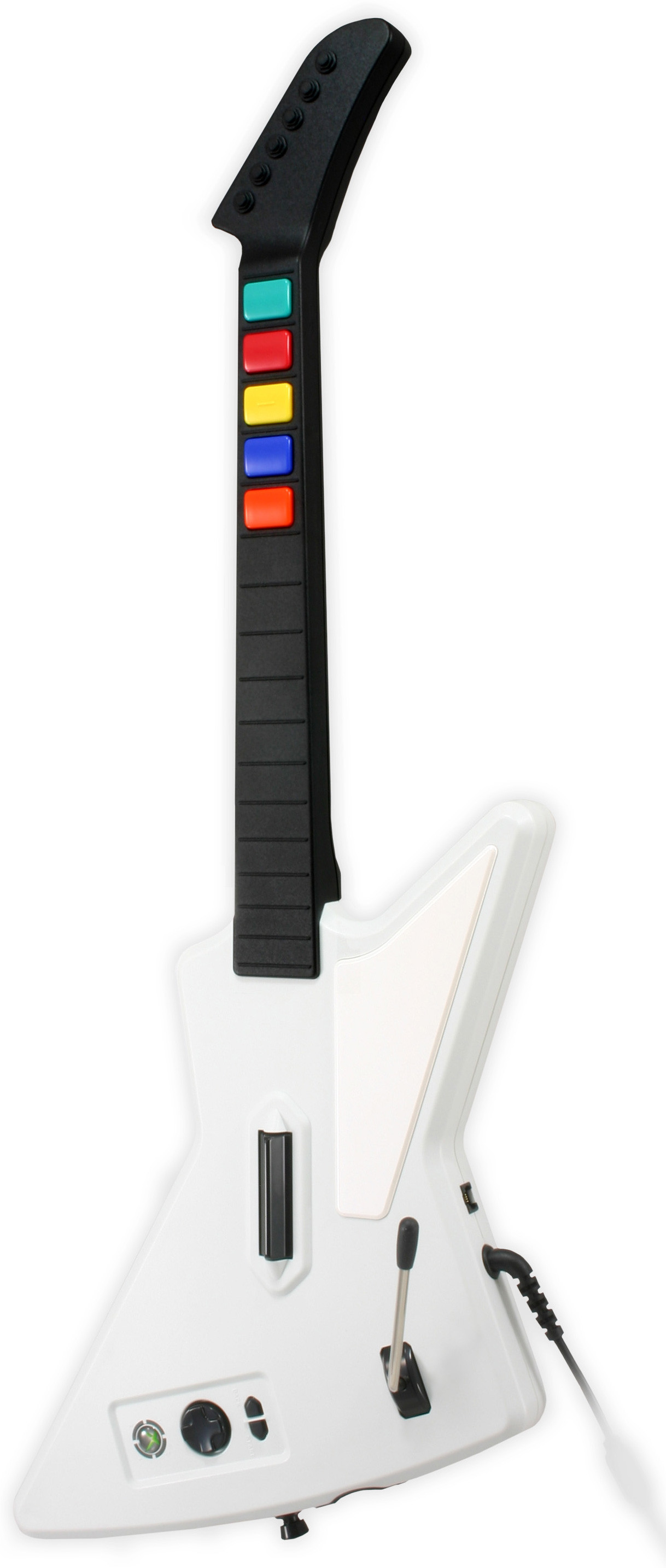 Sleep well, sweet prince of plastic video game instruments
Sleep well, sweet prince of plastic video game instruments
Rock Band 4 proudly champions backwards compatibility, and for the most part, it delivers. The game is designed to work seamlessly with a wide array of legacy Rock Band and even Guitar Hero peripherals. For instance, my wireless Guitar Hero 3 Xbox 360 guitar connected effortlessly to the Xbox One version of Rock Band 4. This is a significant advantage for players who have invested in instruments over the years.
However, the compatibility isn’t flawless. Due to Microsoft’s security protocols, wired controllers are unfortunately not supported. This meant my beloved Guitar Hero II Xplorer, my all-time favorite guitar controller used across countless hours of Xbox 360 Guitar Hero and Rock Band, had to be retired. This is a niche issue, but worth noting for players with specific wired setups. Generally, most wireless last-gen controllers should function without issue on Rock Band 4.
Guitar Hero Live takes a completely different approach, rendering legacy instruments obsolete. The game introduces a revamped guitar controller with a new button configuration (detailed in the next section). This fundamental change in control scheme means that the classic five-color button system is incompatible, and consequently, none of your older Guitar Hero controllers will work with Guitar Hero Live. This clean break with the past, while innovative, forces players to invest in new hardware.
Winner: Rock Band 4 – For embracing legacy instruments and offering a cost-effective entry point for returning players, Rock Band 4 takes the first round.
Round 2: Guitar Gameplay – Revolution vs. Evolution in Rhythmic Action
While Rock Band broadened the rhythm game experience by incorporating drums, vocals, and keyboards, the guitar remains the iconic instrument and the primary focus for many fans. How do Guitar Hero Live and Rock Band 4 approach this core gameplay element?
Rock Band 4 opts for evolution, staying true to the established five-color highway system. If you’ve played any Guitar Hero title, including classics like Guitar Hero 4 (World Tour), or previous Rock Band games, you’ll feel immediately comfortable. The core mechanics are virtually unchanged, offering a familiar and accessible experience.
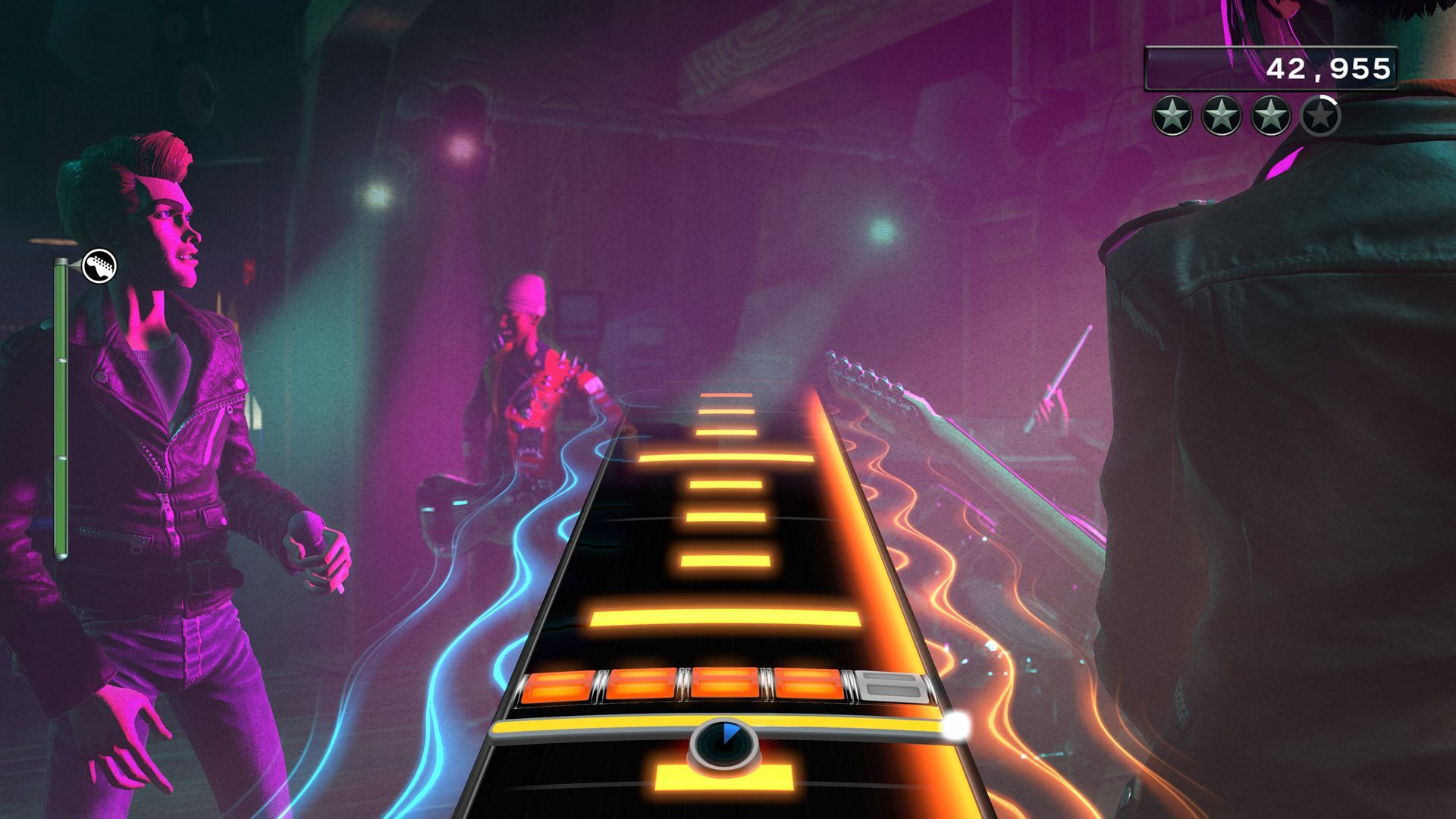 Rock Band 4
Rock Band 4
The primary addition to Rock Band 4‘s guitar gameplay is the freestyle solo sections. During these segments, players can improvise and play any notes they desire, with the game intelligently weaving them into a coherent solo. These freestyle sections are reminiscent of features in Harmonix’s Fantasia: Music Evolved and, while interesting in concept, can sometimes sound a bit disjointed. Thankfully, for purists, there’s an option to disable them.
Guitar Hero Live, on the other hand, is all about revolutionizing the guitar gameplay. It boldly abandons the five-color system in favor of a brand-new guitar controller featuring two rows of three buttons each on the fretboard. This innovative six-button layout fundamentally alters the playing experience.
This new design aims to emulate the feel of playing a real guitar more closely. On higher difficulty levels, players are challenged with complex chords that span both rows of buttons. Mastering these intricate fingerings and developing the muscle memory to execute them is incredibly rewarding. It provides a fresh and more tactile sensation compared to the traditional five-button system.
The development of this new control scheme was entrusted to Freestyle Games, renowned for their innovative work on DJ Hero. Their pedigree for creating unique and engaging peripherals is evident in the Guitar Hero Live guitar. After an initial adjustment period, the new system proves to be a genuine improvement over the widely accepted five-color standard in terms of feel and challenge.
Winner: Guitar Hero Live – For its bold innovation and successful reimagining of guitar gameplay with the new six-button controller, Guitar Hero Live edges out Rock Band 4 in this round. While Rock Band 4 offers comfortable familiarity, Guitar Hero Live provides a genuinely fresh and more engaging guitar playing experience.
Round 3: Other Instruments – Band vs. Solo Guitar Star
The scope of instrument selection dramatically differs between these two titles, largely defining their core gameplay philosophies.
Rock Band 4 remains committed to the band experience. Drums, bass guitar, and vocals are all present and accounted for, allowing players to form virtual bands with friends and family. As with guitars, Rock Band 4 generally supports most legacy wireless controllers for these instruments.
However, Rock Band 4 controversially omits keyboard support, a feature that had shown promise in Rock Band 3. The removal of keyboards is a setback for players who enjoyed this instrument and limits the overall band composition options.
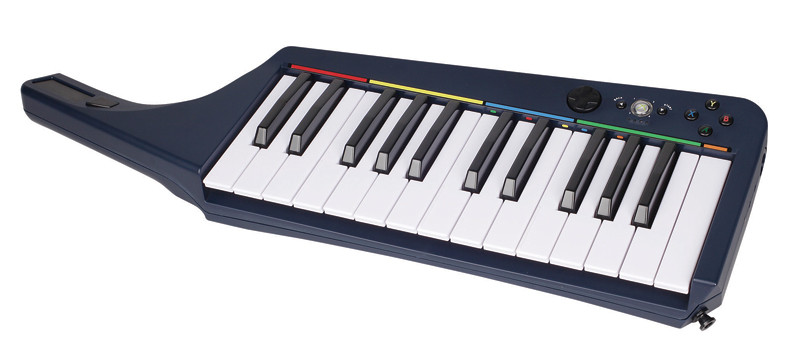 I suppose you can sleep well too, though I
I suppose you can sleep well too, though I
Guitar Hero Live, in stark contrast, narrows its focus solely to the lead guitar experience. There is no drumming or bass guitar gameplay in Guitar Hero Live. The game is laser-focused on delivering the definitive lead guitar simulation.
While Guitar Hero Live primarily emphasizes guitar, it does offer a vocal option using either a standard Logitech-compatible microphone or a Guitar Hero Live companion app for iOS devices. However, vocals feel more like an afterthought compared to the core guitar-centric gameplay. Guitar Hero Live is unapologetically about mastering the six-string axe, leaving other instruments behind.
Winner: Rock Band 4 – For offering a full band experience with drums, bass, and vocals, Rock Band 4 decisively wins this round. Guitar Hero Live‘s singular focus on guitar, while refined, limits its appeal for players seeking a collaborative band gameplay experience.
Round 4: Visual Design – Live Action vs. Stylized Animation
Visual presentation is a subjective aspect, but the distinct art styles of Guitar Hero Live and Rock Band 4 significantly contribute to their overall feel.
Rock Band 4 maintains a visual style consistent with previous entries in the series. While detail is enhanced, the overall aesthetic remains familiar. Players still create bands and customize stylized, polygonal characters using a character creator that, while functional, hasn’t seen significant evolution.
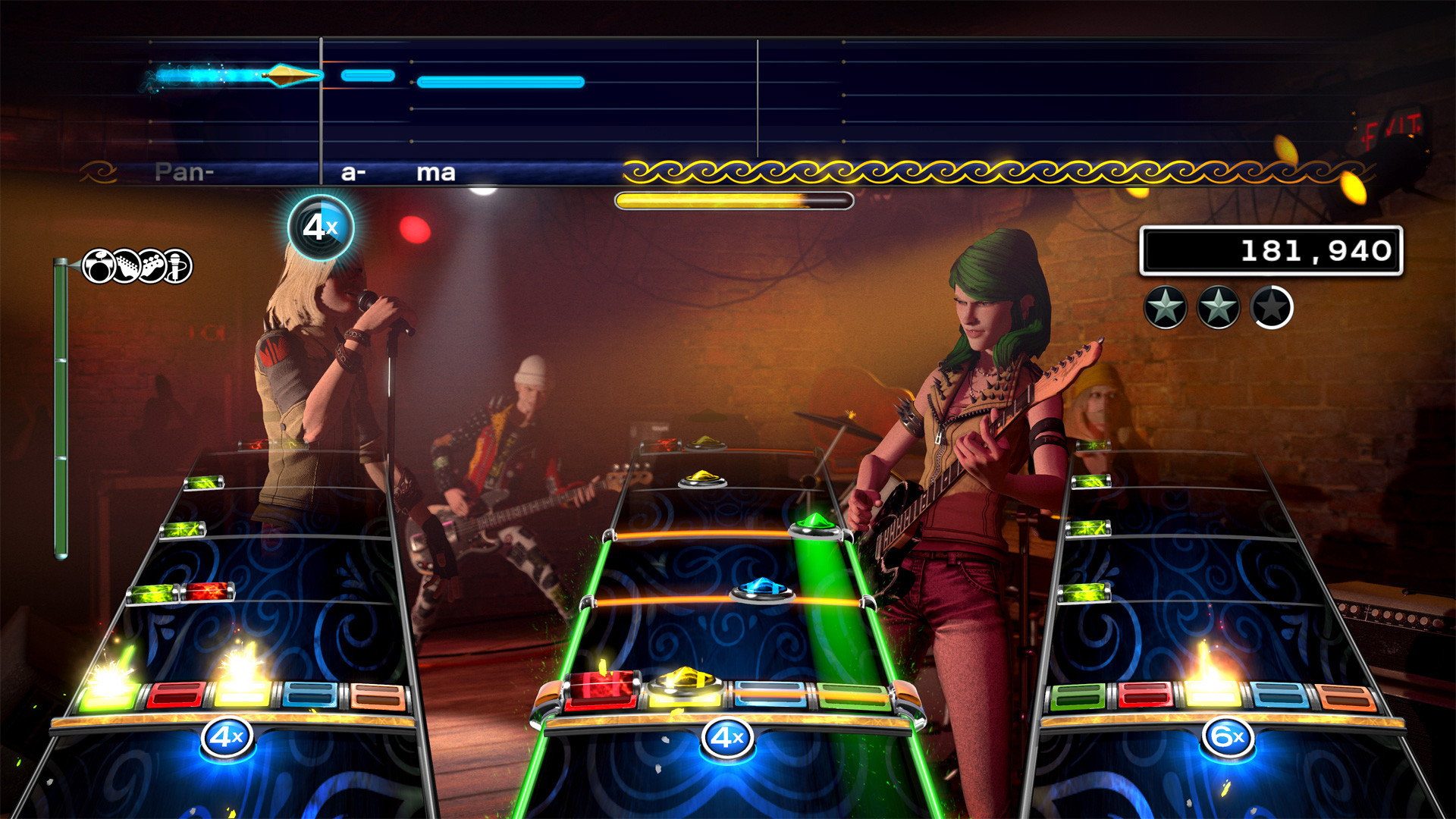 Let
Let
This familiar engine is designed to efficiently handle a vast library of downloadable content, ensuring that DLC songs integrate seamlessly with the game’s visual style, character animations, and lip-syncing. While visually iterative, Rock Band 4‘s design prioritizes functionality and content integration.
Guitar Hero Live adopts a radical visual departure, heavily relying on full-motion video (FMV). This approach manifests in two distinct modes: GHTV and GH Live, with varying degrees of success.
GHTV (Guitar Hero TV) mode functions as a streaming music television channel. Players play along to music videos, offering a unique way to discover new artists and songs. The integration of official music videos is a strong point, adding visual interest and context to the gameplay.
GH Live mode immerses players in first-person live concert performances. Crowd reactions dynamically shift based on player performance, creating a sense of being on stage. However, the execution is somewhat flawed. The transitions between “good” and “bad” performance videos can feel abrupt and jarring.
Furthermore, the acting in GH Live mode can be perceived as cheesy and unconvincing. The hyper-realistic and uniformly attractive band members and crowds can feel artificial and even off-putting for some players, detracting from the sense of immersion. While visually ambitious, the GH Live mode can suffer from a lack of realism and potentially cringe-inducing performances.
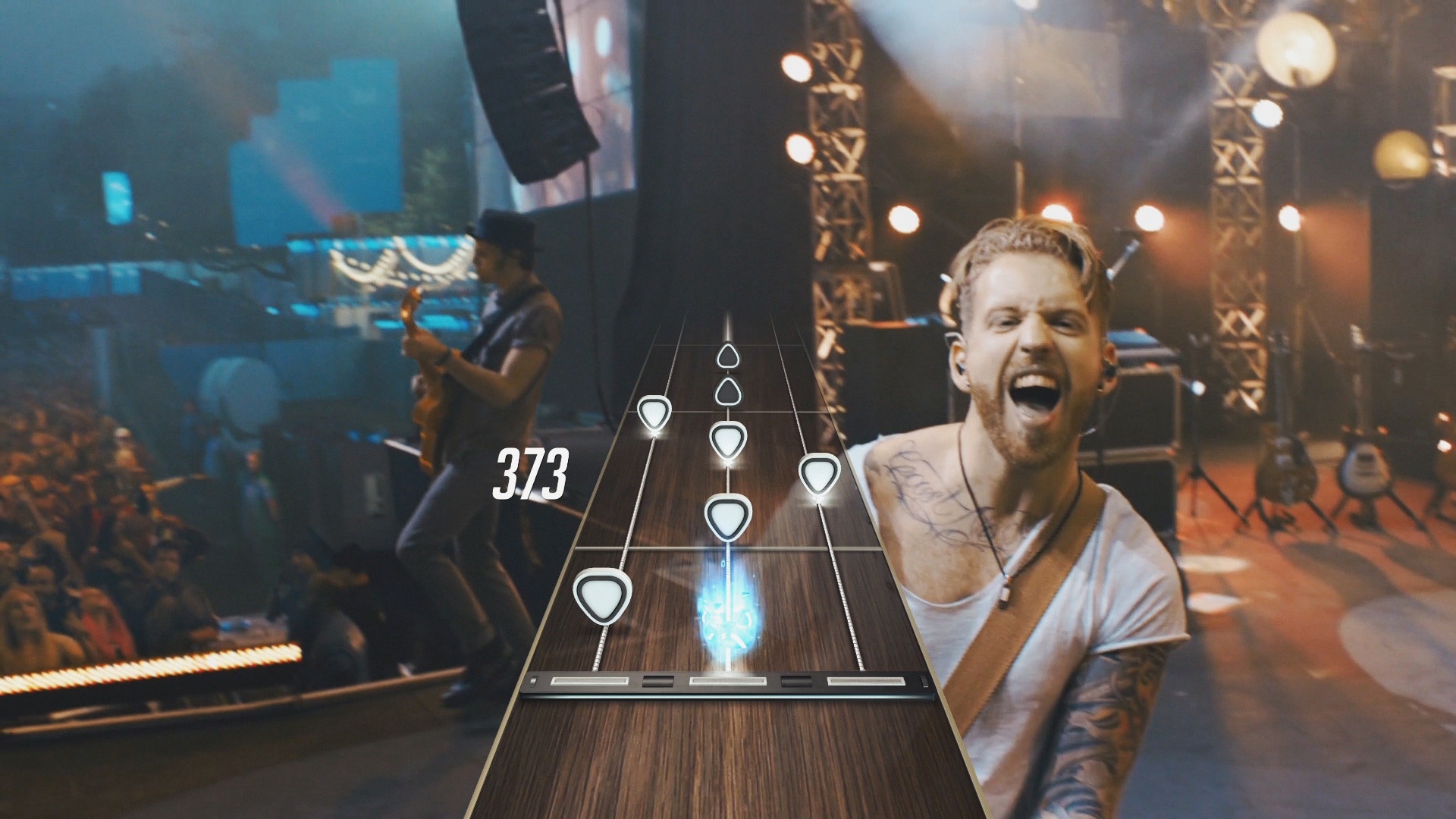 Get off my fucking telly, you complete and utter immaculate moron
Get off my fucking telly, you complete and utter immaculate moron
Despite the shortcomings of GH Live mode, GHTV’s music video integration gives Guitar Hero Live a unique visual edge. While both games have distinct styles, Guitar Hero Live‘s bold move towards FMV, particularly in GHTV, offers a more visually dynamic and contemporary experience.
Winner: Guitar Hero Live – Despite the polarizing nature of the GH Live mode’s FMV, the innovative GHTV mode and its music video integration give Guitar Hero Live the visual win. Rock Band 4, while functional and consistent, lacks the visual dynamism and novelty of Guitar Hero Live.
Round 5: On-Disc and Free Content – Starting Song Libraries
For players hesitant about downloadable content, the initial song selection and free content offerings are crucial factors.
Rock Band 4 includes a respectable 65 on-disc songs, spanning a wide range of genres and eras, from classics like “Brown Eyed Girl” and “Suspicious Minds” to contemporary hits like “Uptown Funk.” Beyond the initial disc, free content is limited, with only occasional free songs added to the online catalog. Expanding the song library primarily requires purchasing DLC. Even importing tracks from Rock Band 3 incurs a fee.
Guitar Hero Live‘s GH Live mode features a smaller on-disc selection of 42 songs, ranging from “Paint It Black” to Linkin Park’s “Wastelands.” However, Guitar Hero Live compensates with its GHTV mode, which launched with an impressive 200+ music videos available for streaming and play at no additional cost. This library has continued to expand post-launch, with over 90 songs added within the first two months alone, providing a constant stream of new, free content.
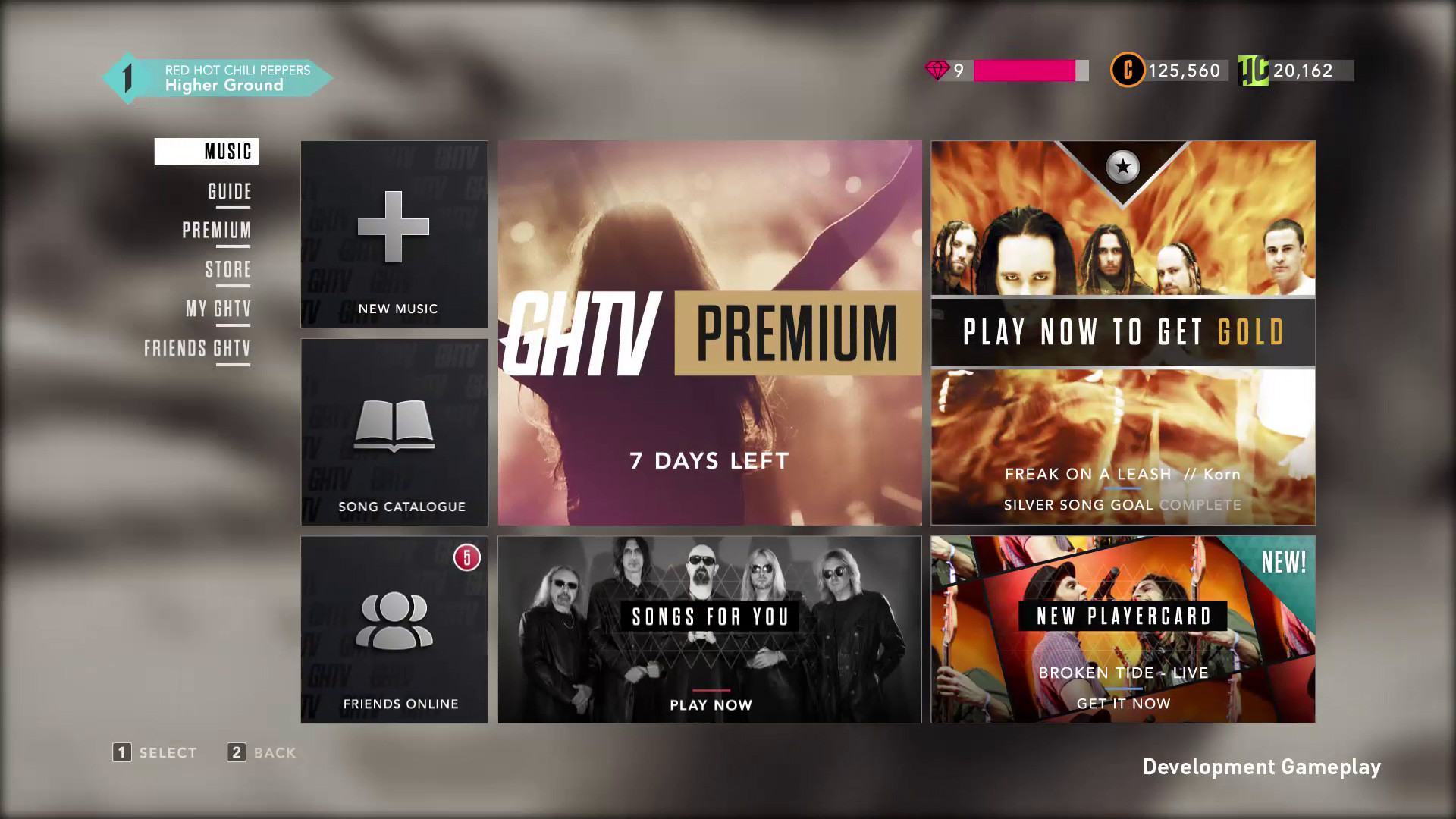 The GHTV mode in all its glory. This is Guitar Hero Live
The GHTV mode in all its glory. This is Guitar Hero Live
While GHTV’s streaming nature means players don’t have immediate access to every song at any time, “Play Tokens” can be earned through gameplay or purchased with real currency, allowing on-demand song selection. For players focused on maximizing initial content without additional purchases, GHTV’s expanding library of free, streaming songs gives Guitar Hero Live a significant advantage.
Winner: Guitar Hero Live – GHTV’s extensive library of free, streaming music videos, which continues to grow, provides significantly more initial content for the price of entry compared to Rock Band 4‘s limited on-disc selection and reliance on paid DLC.
Round 6: Downloadable Content – Building Your Music Library
For players willing to invest in downloadable content to expand their song libraries, the DLC offerings and systems differ significantly between the two games.
Guitar Hero Live becomes less appealing for DLC enthusiasts. While GHTV offers a large library, players never truly “own” these songs. Playing specific songs on demand requires tokens, creating a sense of rental rather than ownership. Running out of tokens necessitates further purchases to continue playing desired songs.
The GH Live mode’s FMV production also limits DLC potential. Creating bespoke first-person videos for new songs with actors is a costly endeavor, making future DLC additions to GH Live unlikely. The 42 on-disc songs are likely the extent of GH Live’s playable song list.
Rock Band 4 adopts a traditional DLC model. Its engine is designed for easy DLC integration, and it has capitalized on this strength. A vast majority of Rock Band 3‘s extensive DLC library has been ported to Rock Band 4, resulting in a massive catalog of over 1500 songs available for purchase.
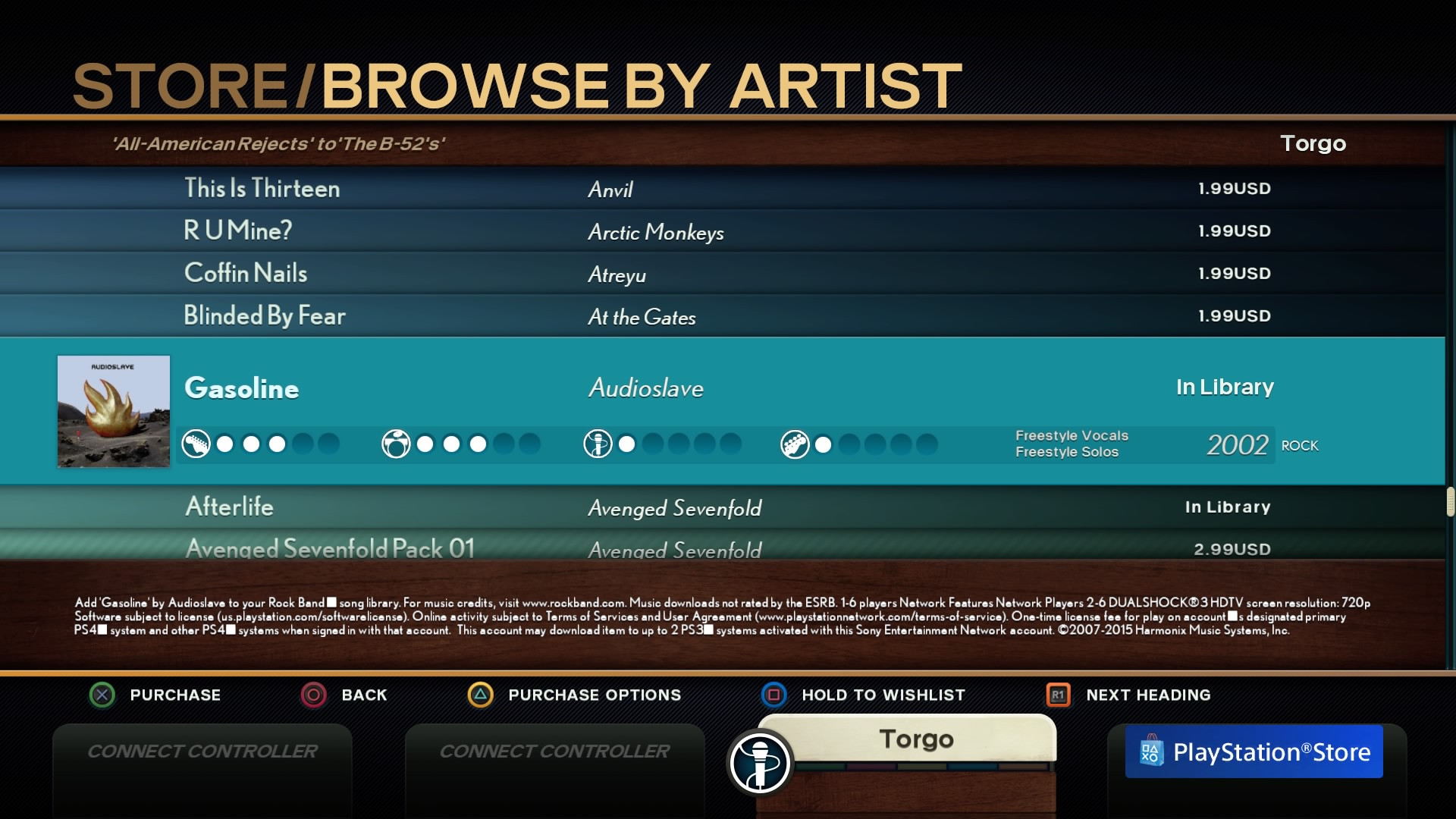 You can even buy Audioslave stuff if you want to pretend it
You can even buy Audioslave stuff if you want to pretend it
Crucially, purchasing DLC songs in Rock Band 4 grants permanent ownership, allowing unlimited plays. For players committed to building a large, personalized music library through DLC, Rock Band 4 offers a far more robust and player-friendly system.
Winner: Rock Band 4 – For its extensive and growing DLC library, coupled with a traditional ownership model, Rock Band 4 is the clear winner for players interested in building a vast and permanent song collection. Guitar Hero Live‘s DLC limitations and token-based system are less appealing for dedicated DLC purchasers.
Round 7: Single-Player Experience – Solo Rock Star Journeys
The single-player experiences in rhythm games can vary greatly. Let’s examine how Guitar Hero Live and Rock Band 4 cater to solo gamers.
Guitar Hero Live, with its focus on lead guitar and first-person perspective, is clearly designed with single-player gaming in mind. The GHTV mode features profile progression, where players earn experience, level up, and unlock customization items like highway styles and profile icons. GHTV songs also include specific challenges, adding replayability and encouraging players to improve their scores and performance. Guitar Hero Live offers a sense of progression and reward tailored to the solo player.
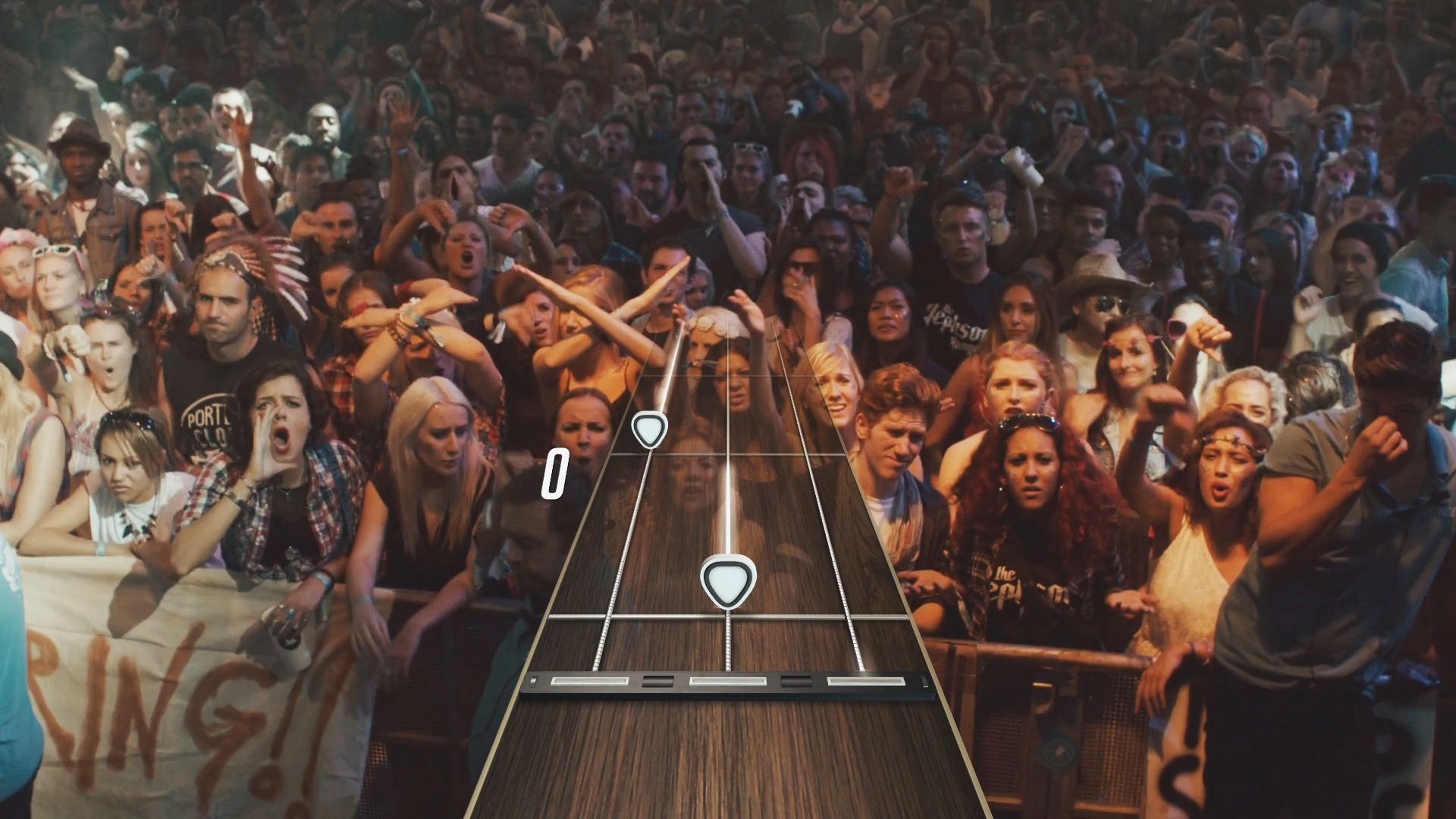 You
You
Rock Band 4‘s single-player offerings are less compelling. The Career mode is surprisingly short compared to previous Rock Band titles, including Guitar Hero 4: World Tour‘s career mode. Beyond the Career mode, single players are largely limited to Quick Play mode, selecting individual songs for isolated plays. Rock Band 4 lacks a strong sense of single-player progression or long-term engagement beyond song-specific play.
Winner: Guitar Hero Live – For its profile progression, unlockable content, and song-specific challenges in GHTV mode, Guitar Hero Live offers a more engaging and rewarding single-player experience compared to Rock Band 4‘s comparatively shallow solo offerings.
Round 8: Local Multiplayer – Jamming with Friends
Local multiplayer is a cornerstone of the plastic instrument genre. How do Guitar Hero Live and Rock Band 4 facilitate social gaming?
Guitar Hero Live severely underperforms in local multiplayer. It only recognizes a second guitar in GHTV mode, and even then, both players play lead guitar parts. This results in a competitive, rather than cooperative, experience. Players compete for the highest score, which can be unbalanced and less enjoyable when skill levels differ significantly. Local multiplayer feels like an afterthought in Guitar Hero Live.
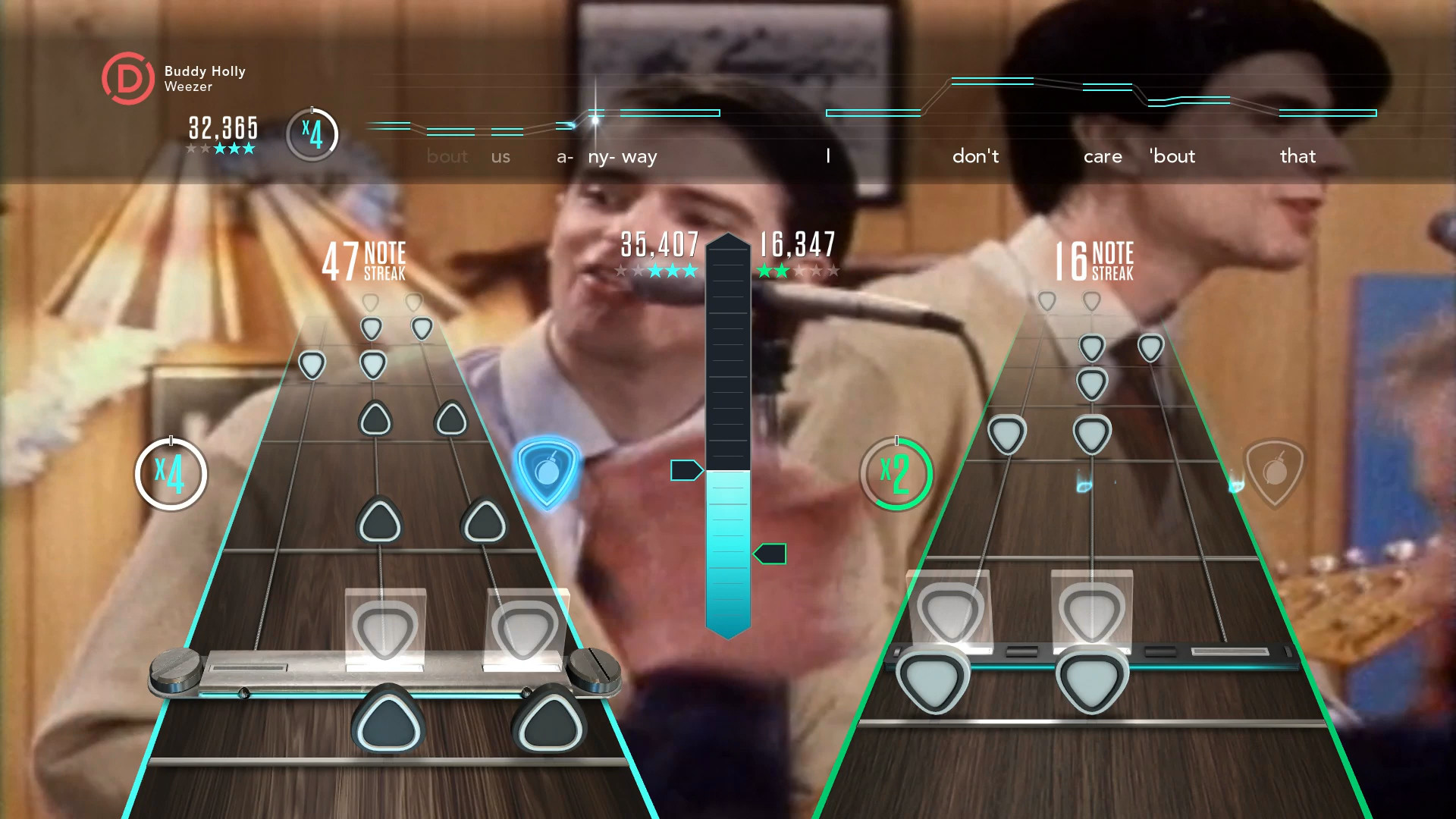 Not even Weezer can make local multiplayer better in Guitar Hero Live
Not even Weezer can make local multiplayer better in Guitar Hero Live
Rock Band 4, in contrast, excels in local multiplayer. It retains the classic Rock Band band experience, allowing up to four players to play lead guitar, bass, drums, and vocals cooperatively on the same screen. While not revolutionary, Rock Band 4 delivers a polished and highly enjoyable local multiplayer experience that is a hallmark of the series. Forming a band with friends and family and nailing songs together remains a uniquely satisfying and social gaming experience.
Winner: Rock Band 4 – Rock Band 4 is the undisputed champion of local multiplayer. Its full band support and cooperative gameplay provide a vastly superior social gaming experience compared to Guitar Hero Live‘s limited and competitive two-guitar GHTV mode.
Round 9: Ongoing Updates and Support – Long-Term Game Evolution
Both Harmonix and Activision have positioned Rock Band 4 and Guitar Hero Live as platforms for ongoing updates and content additions, rather than isolated game releases.
Rock Band 4 has received updates introducing social score challenge features, character customization options, and a “Brutal” difficulty mode for increased challenge. Harmonix has demonstrated a commitment to evolving Rock Band 4 post-launch.
Guitar Hero Live has also been actively updated, primarily through GHTV mode with a continuous influx of new songs (over 90 within the first two months). Customization options, such as note highway styles, have also been added. A “Rivals” mode introduced online competitive play within GHTV, matching players against similarly skilled opponents for score-based challenges.
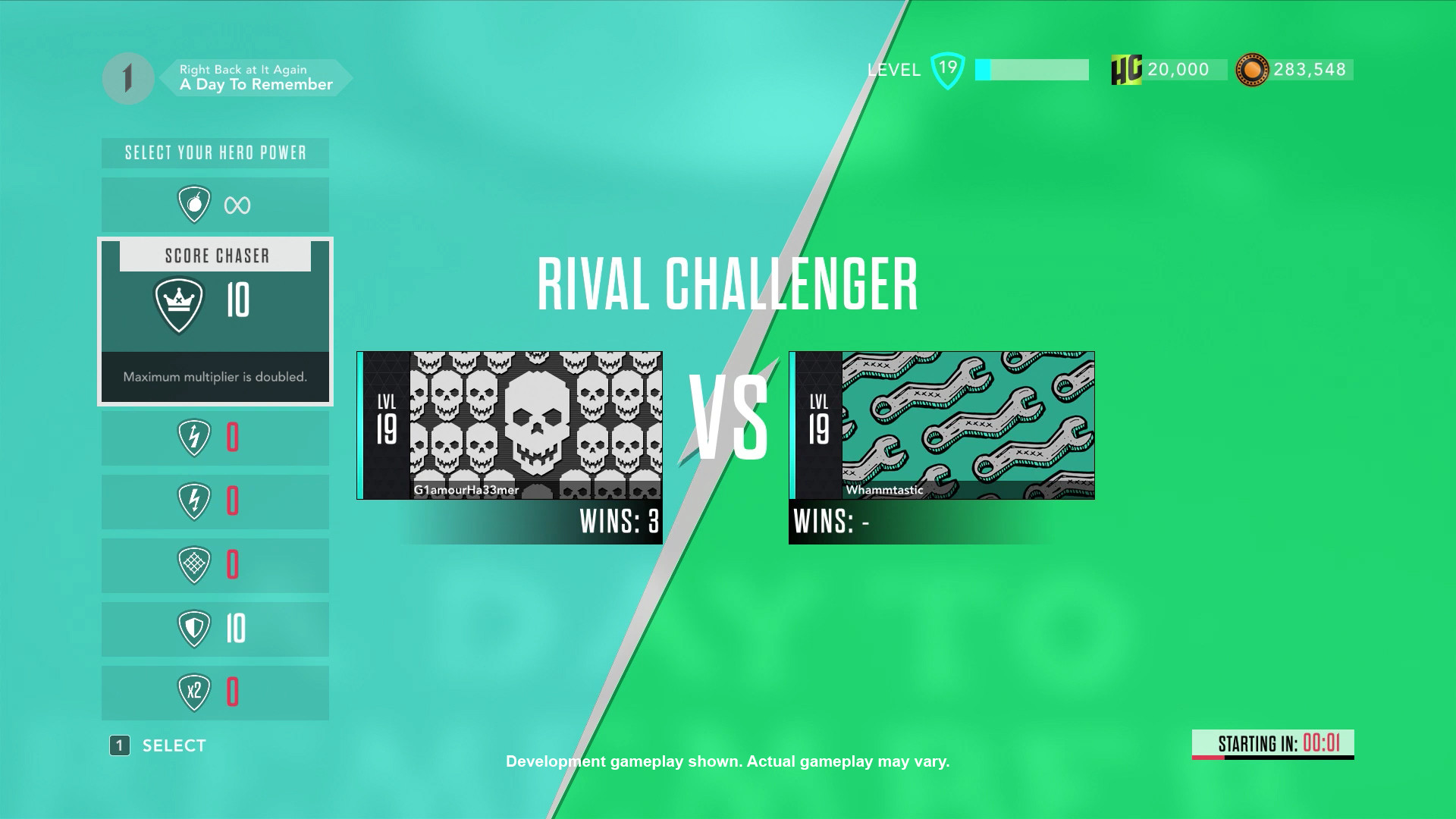 Guitar Hero Live Rivals mode
Guitar Hero Live Rivals mode
Both games have demonstrated a commitment to ongoing support beyond initial release, offering new content, features, and customization options. This suggests that both Rock Band 4 and Guitar Hero Live are intended to be evolving platforms, providing long-term value for players.
Winner: Draw – Both Rock Band 4 and Guitar Hero Live have shown a commitment to post-launch updates and support, making this round a draw. Players can expect continued evolution and new content for both titles.
The Verdict – Choosing Your Rhythm Game Destiny
After a thorough examination across nine rounds, the ultimate decision between Guitar Hero Live and Rock Band 4 hinges on your preferred play style and gaming priorities.
If you are primarily a single-player gamer and value solo progression and a fresh, innovative guitar experience, Guitar Hero Live is the clear recommendation. Despite the cheesy FMV of GH Live mode, the GHTV mode’s dynamic content, progression system, and the innovative six-button guitar controller offer a compelling and engaging solo journey. For players seeking a modern and distinct guitar-focused experience, Guitar Hero Live delivers.
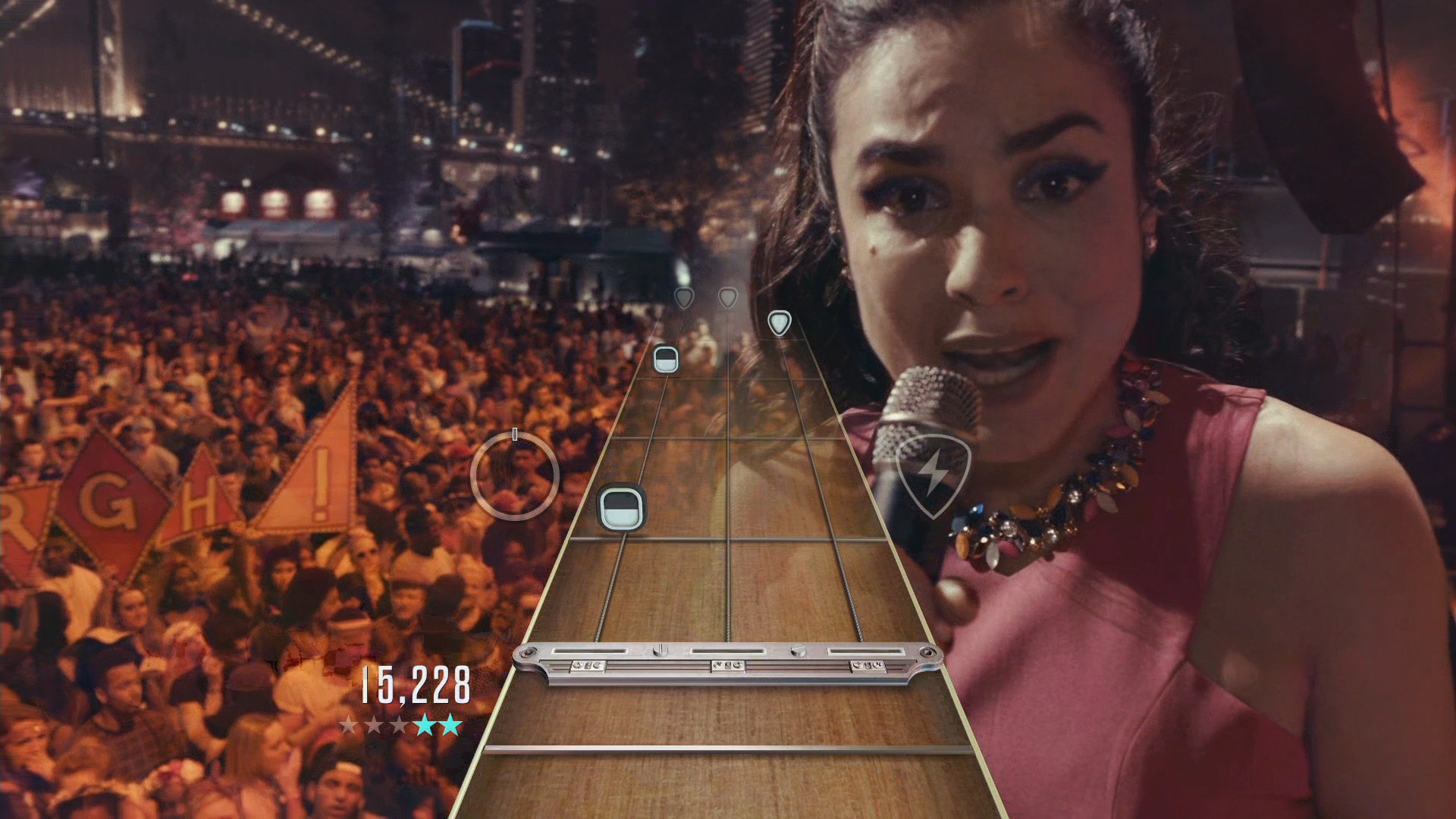 Yes, even despite these beautiful arseholes
Yes, even despite these beautiful arseholes
However, if local multiplayer is a priority and you envision regular jam sessions with friends and family, Rock Band 4 is the definitive choice. Its robust band gameplay, full instrument support, and superior local multiplayer experience make it the ideal game for social gatherings and collaborative music gaming. Furthermore, Rock Band 4‘s extensive DLC library and backwards compatibility with legacy instruments offer long-term value and cost-effectiveness for returning players.
 Rock Band 4 pic 2
Rock Band 4 pic 2
Price is also a factor. Guitar Hero Live typically has a lower entry price with a guitar controller compared to Rock Band 4 with a new guitar. Rock Band 4 becomes more cost-effective if you already own legacy instruments.
Ultimately, both Guitar Hero Live and Rock Band 4 are strong rhythm games, each catering to different player preferences. Guitar Hero Live innovates with guitar gameplay and solo progression, while Rock Band 4 champions social gaming and band simulation. Your choice depends on whether you prioritize a cutting-edge solo guitar experience or a classic band-centric multiplayer game. No matter your pick, both games offer a pathway to rocking out in the digital age, carrying the legacy of franchises like Guitar Hero 4 forward into a new generation.

